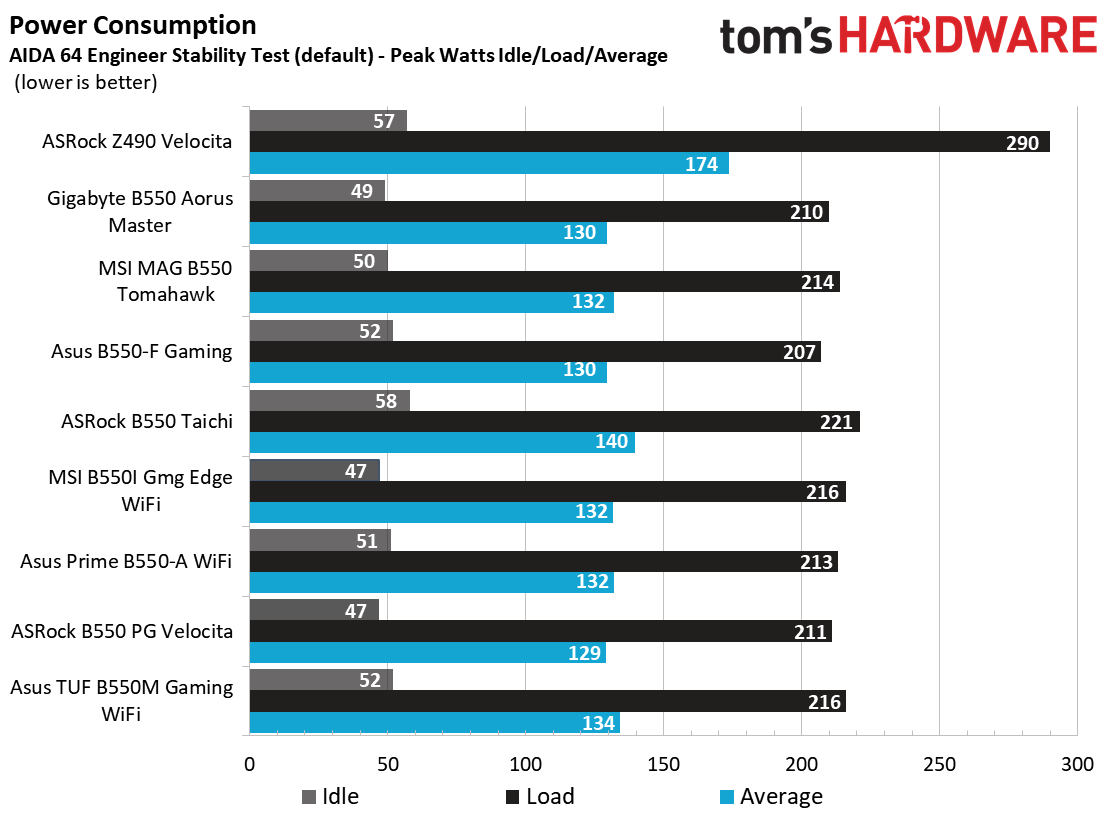Why you can trust Tom's Hardware
Our standard benchmarks and power tests are performed using the CPU’s stock frequencies (including stock Thermal Velocity Boost), with all power-saving features enabled. Optimized defaults get set in the BIOS, and the memory uses its XMP profiles. For this baseline testing, we set Windows to High Performance, except for power testing that uses the Balanced plan for the PC to reach an idle state.
Synthetic Benchmarks
Synthetic benchmarks are a great tool to figure out if a board is running out of spec, as identical settings should produce similar performance results. Advanced memory timings are the one place where motherboard makers can still optimize for either stability or performance, though, and those settings can impact some testing.
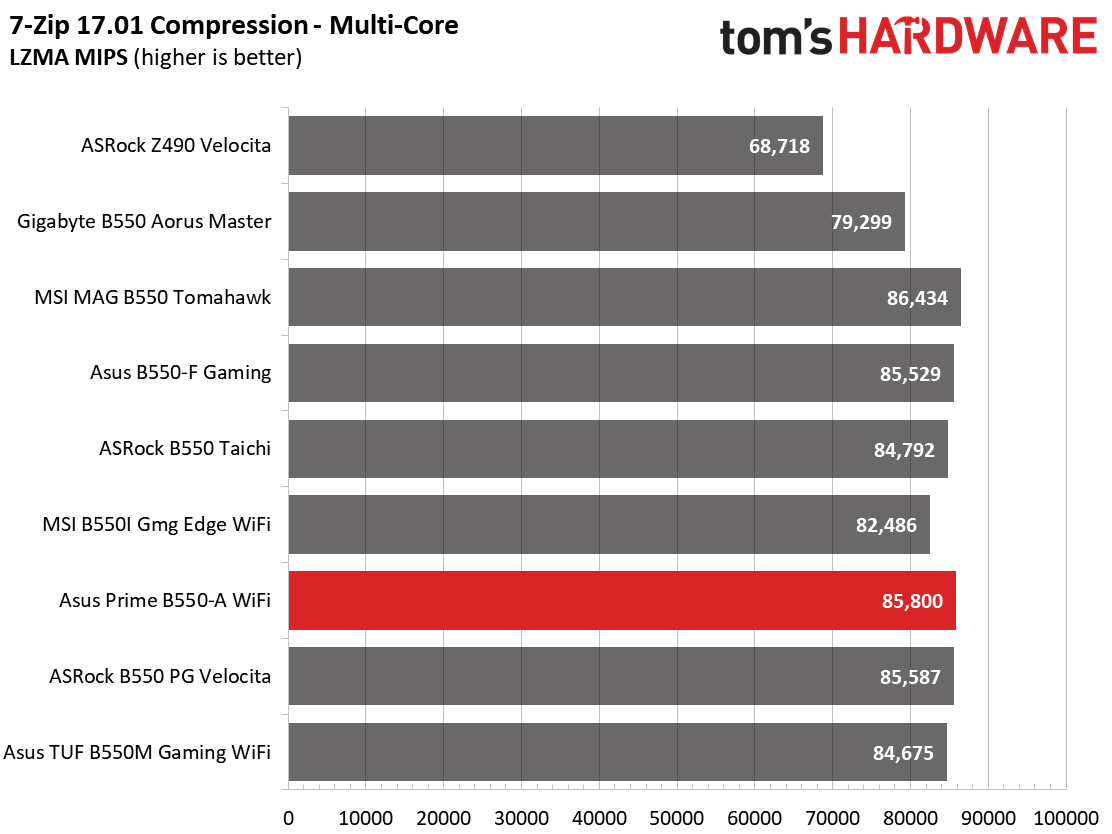
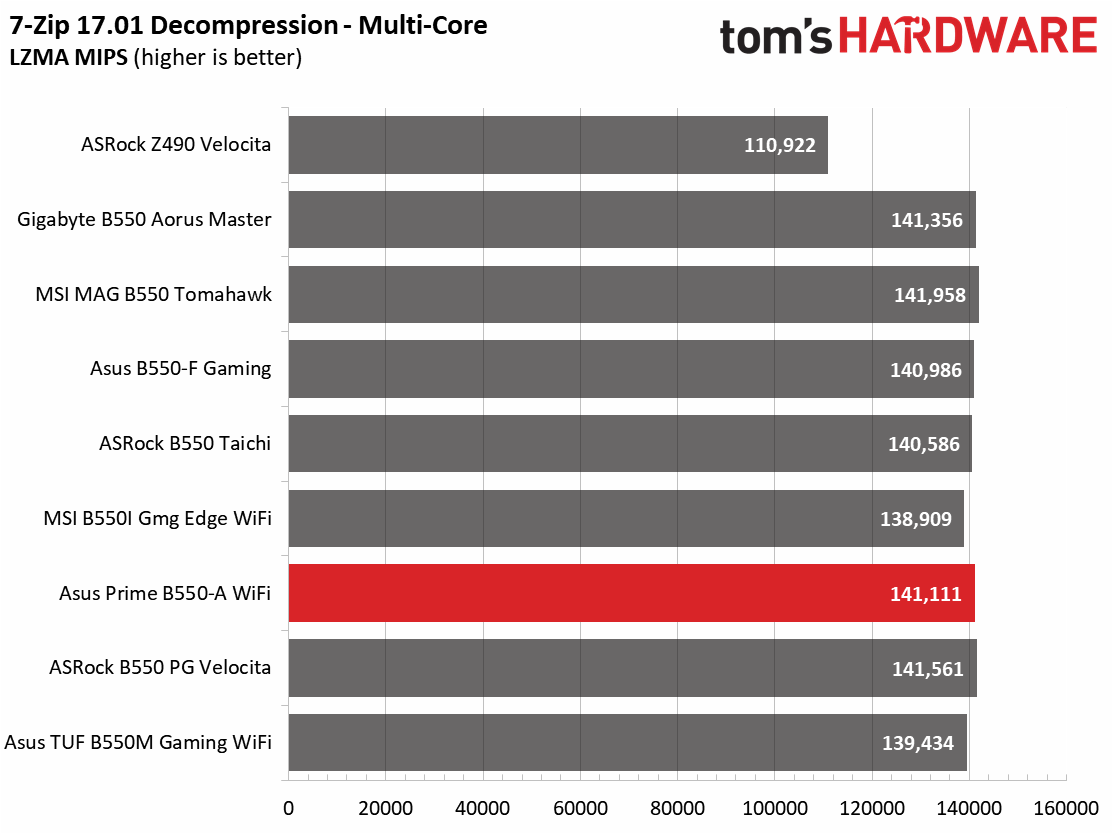



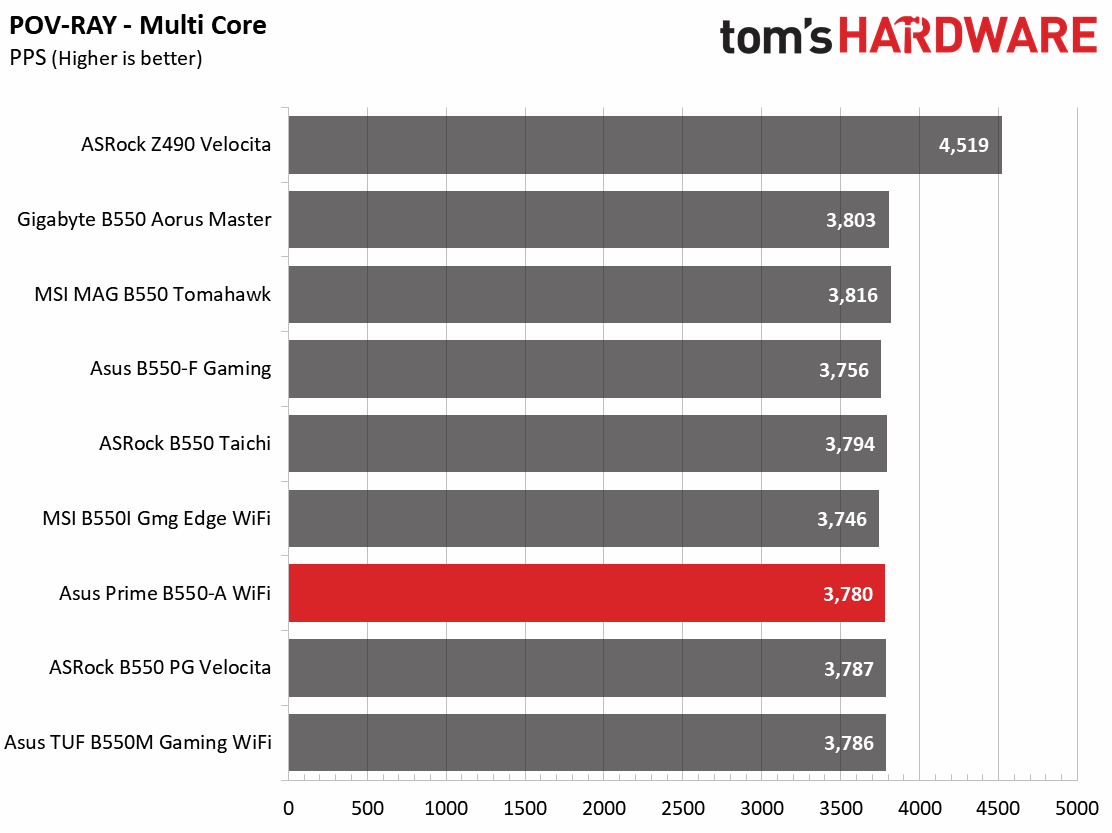
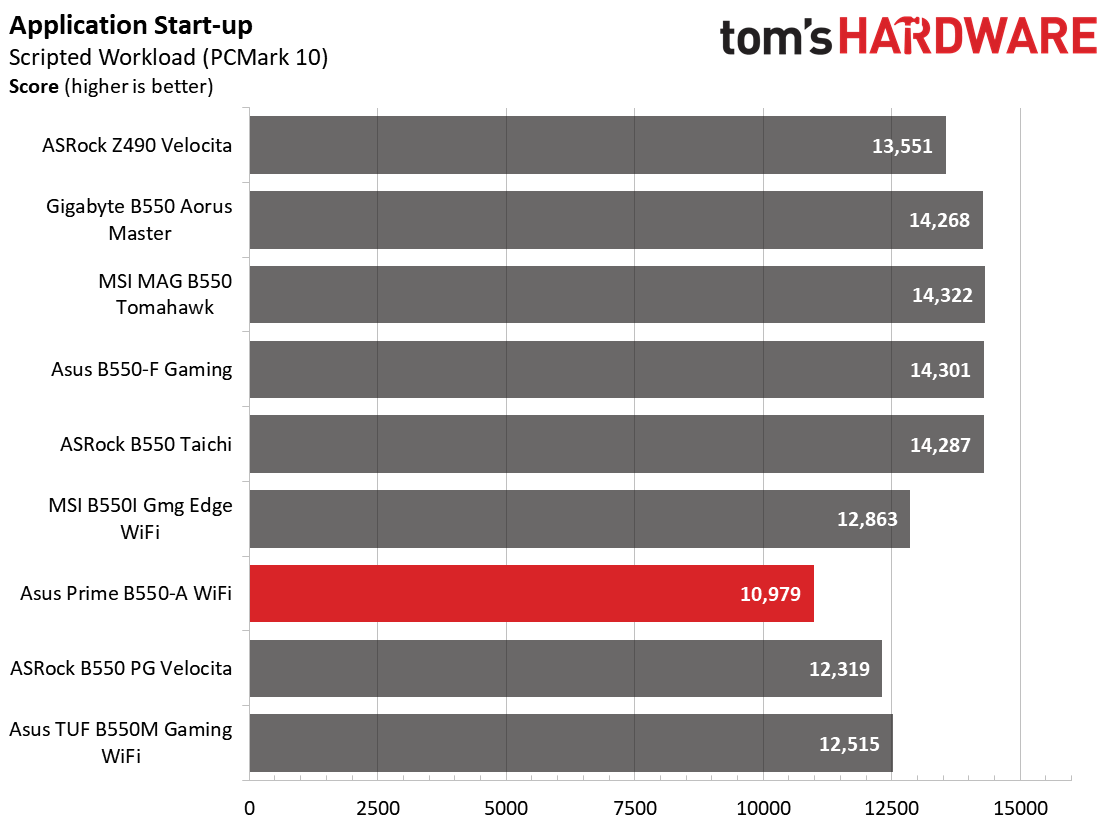


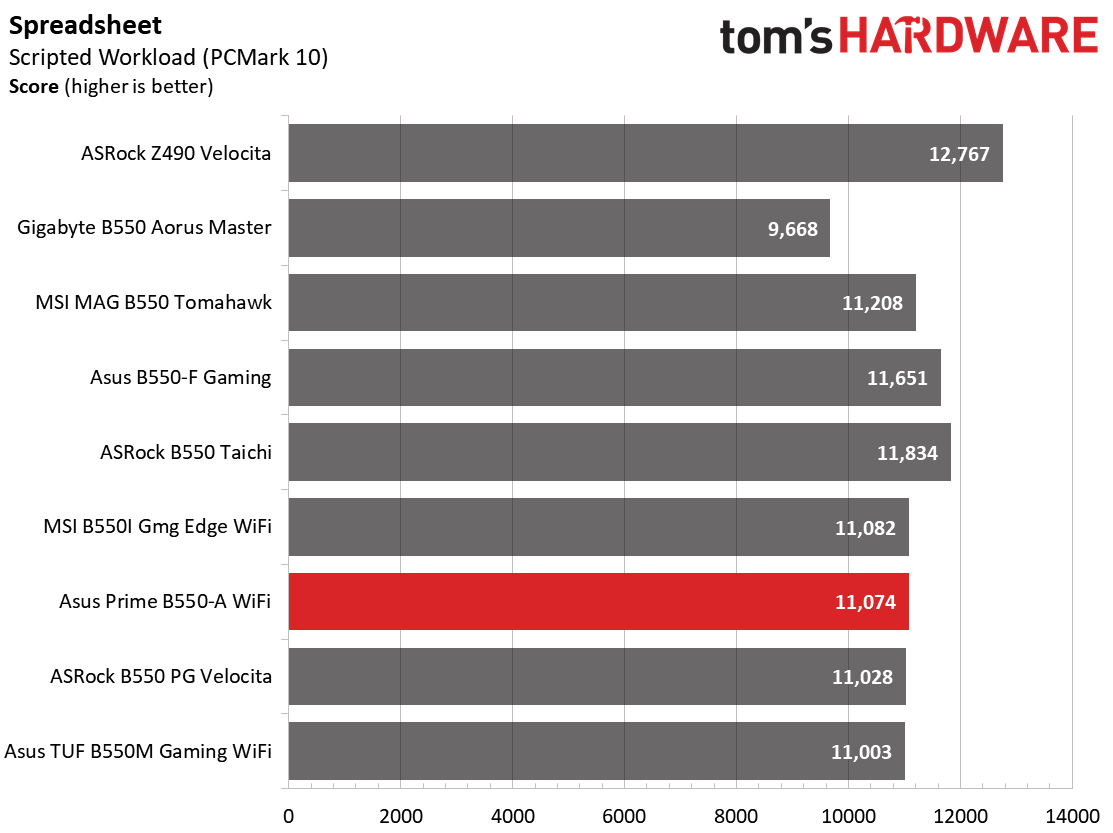
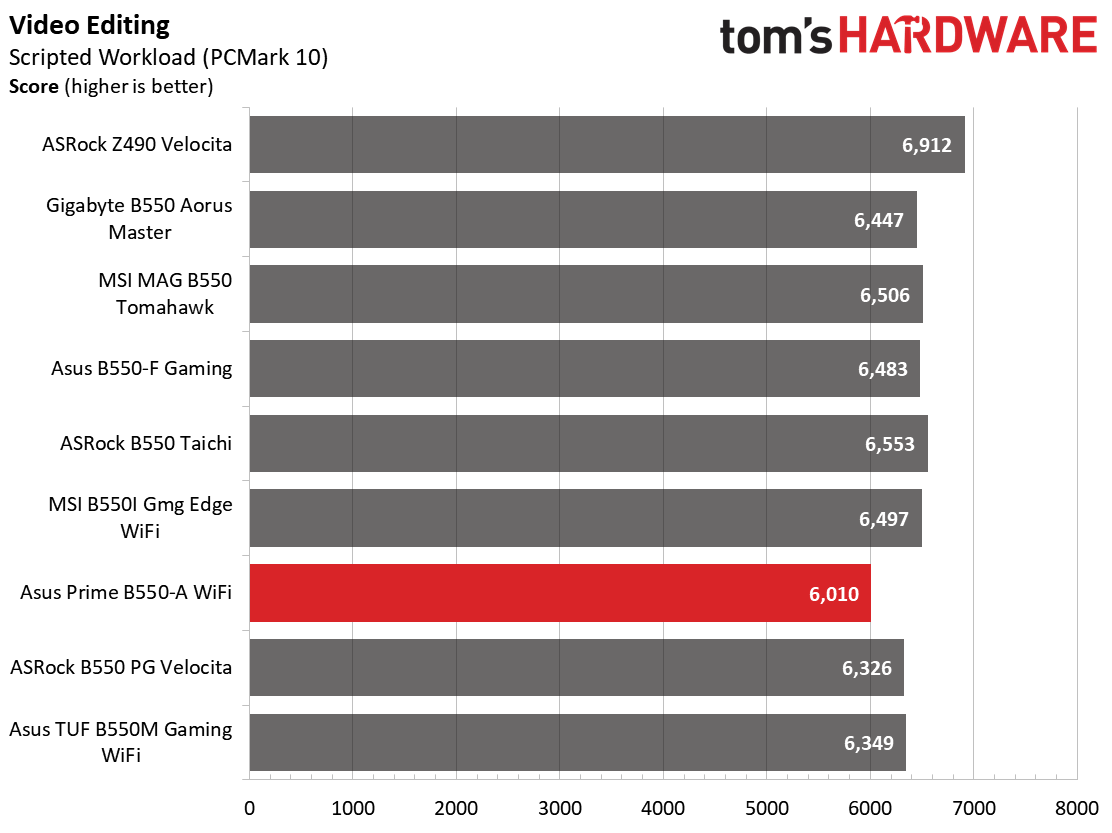
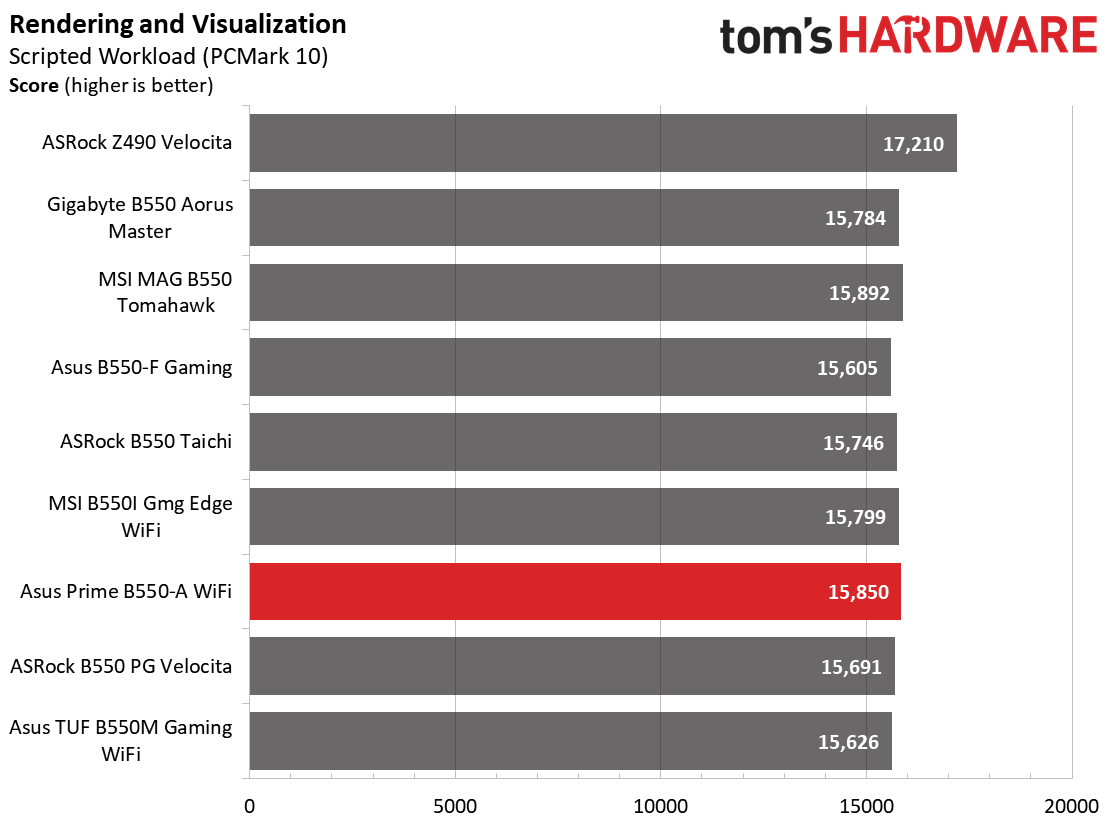

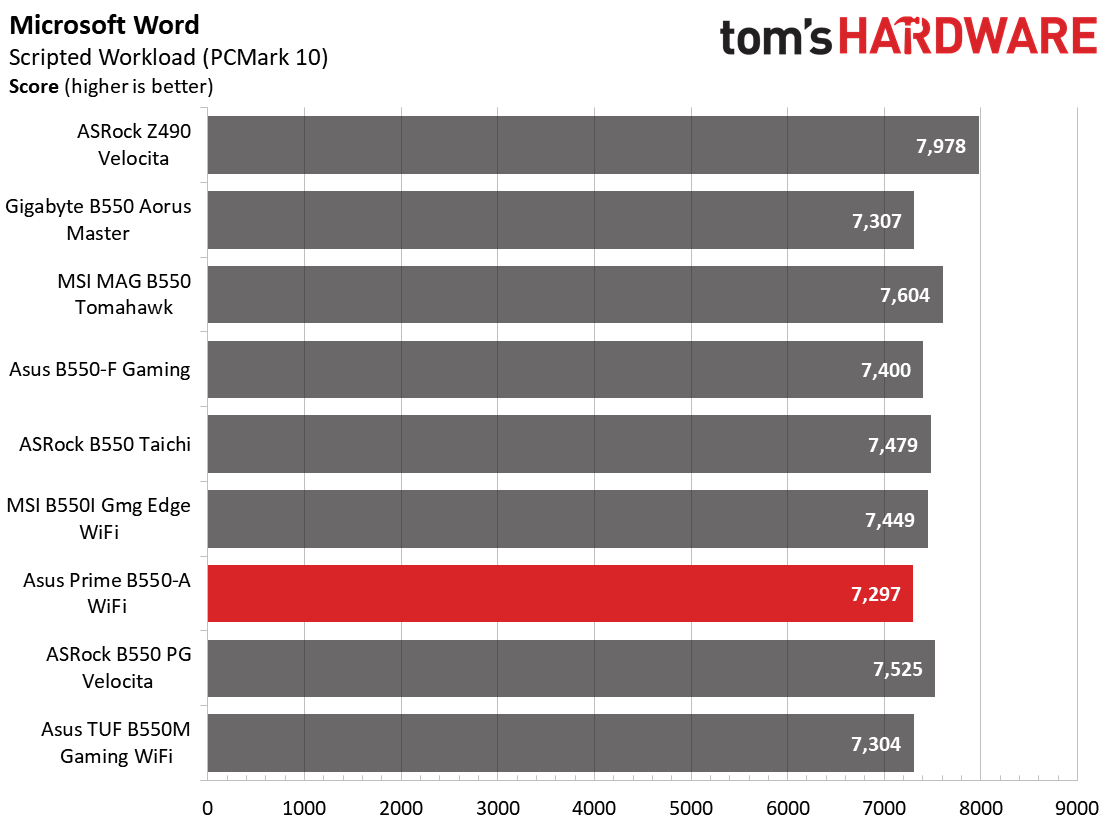
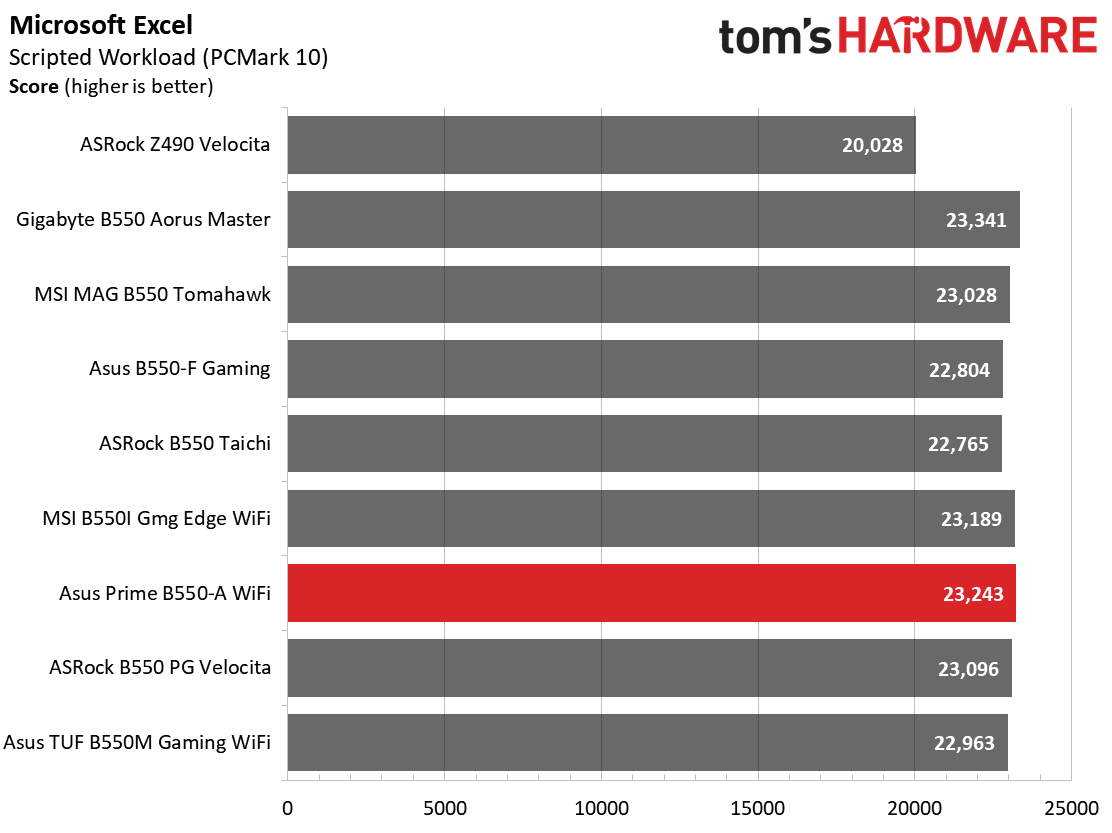
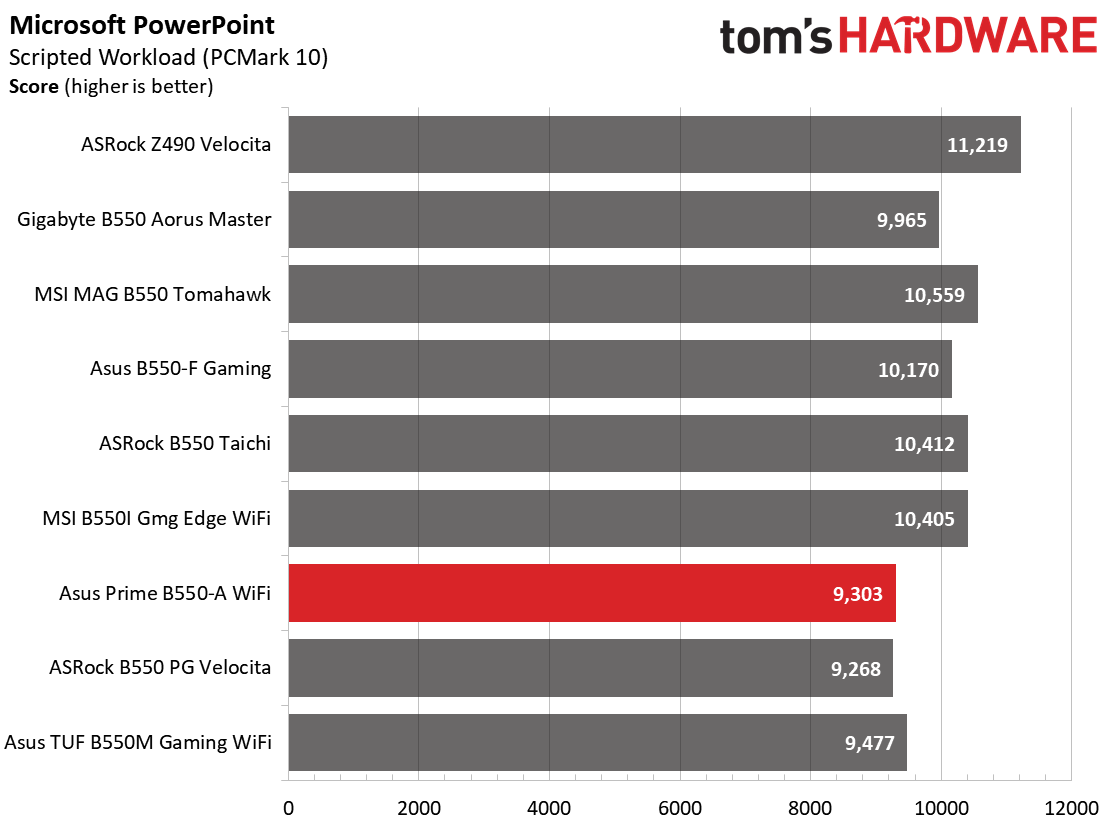

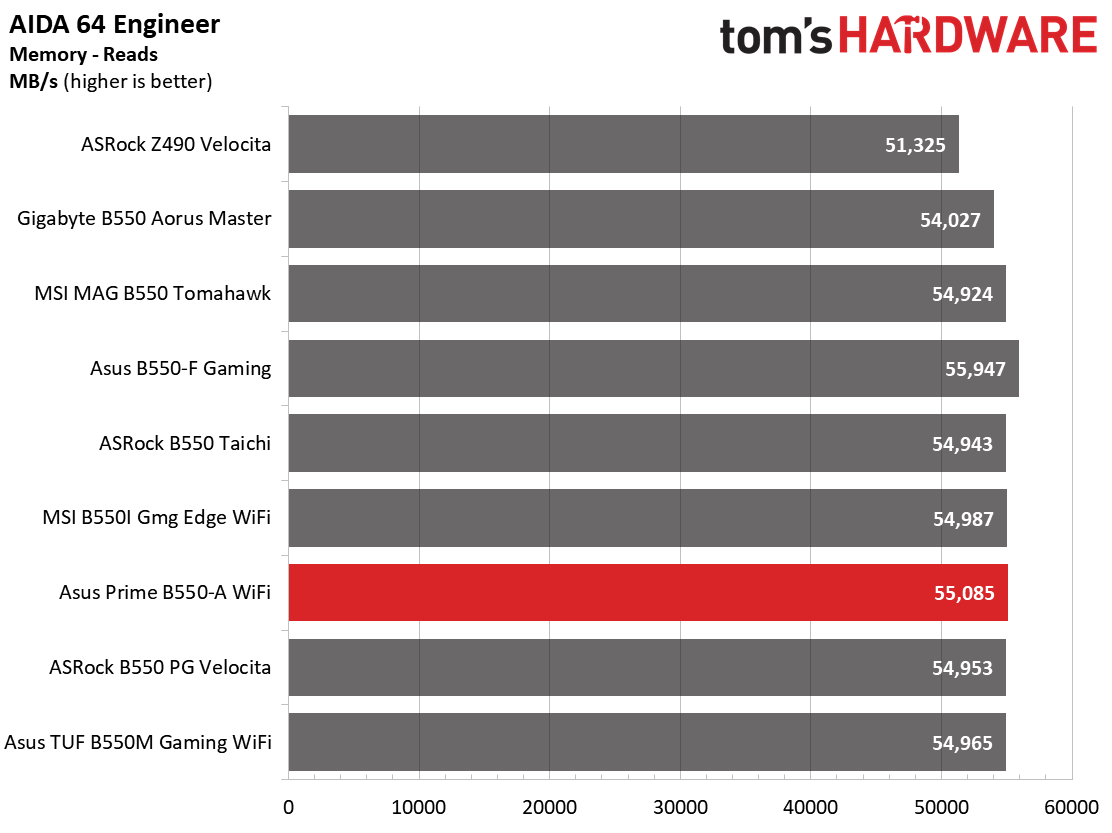
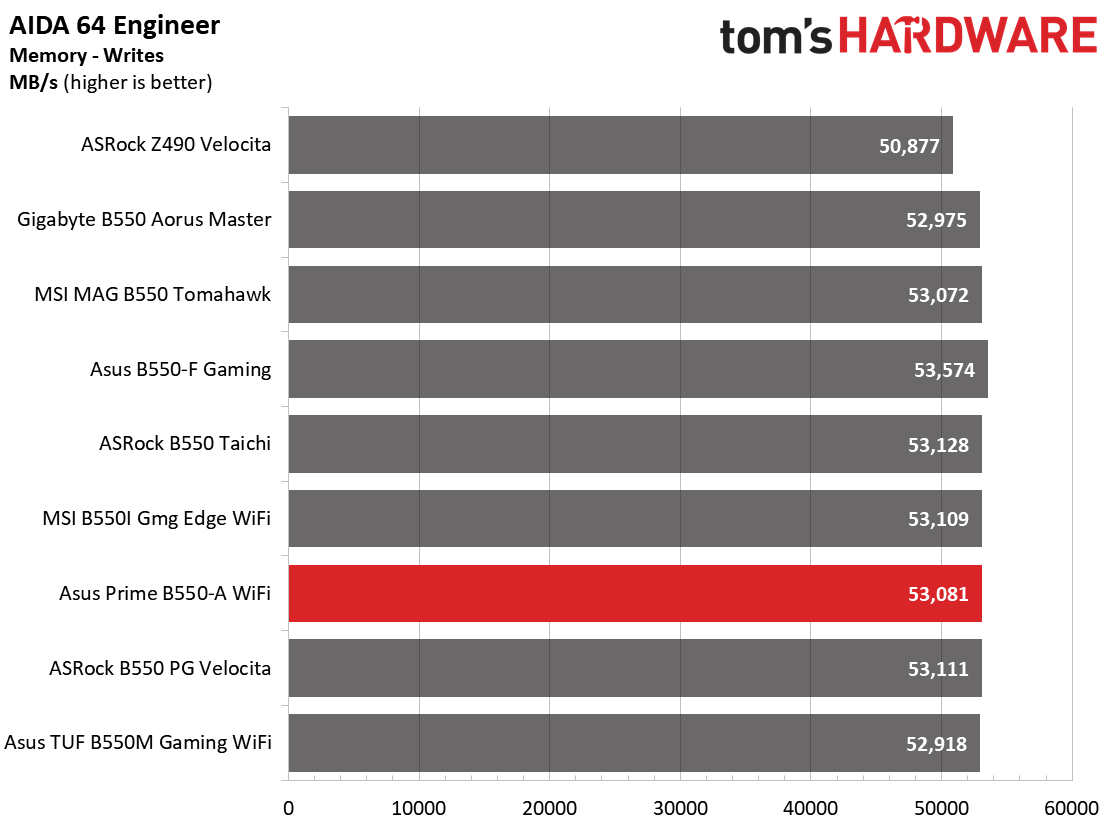
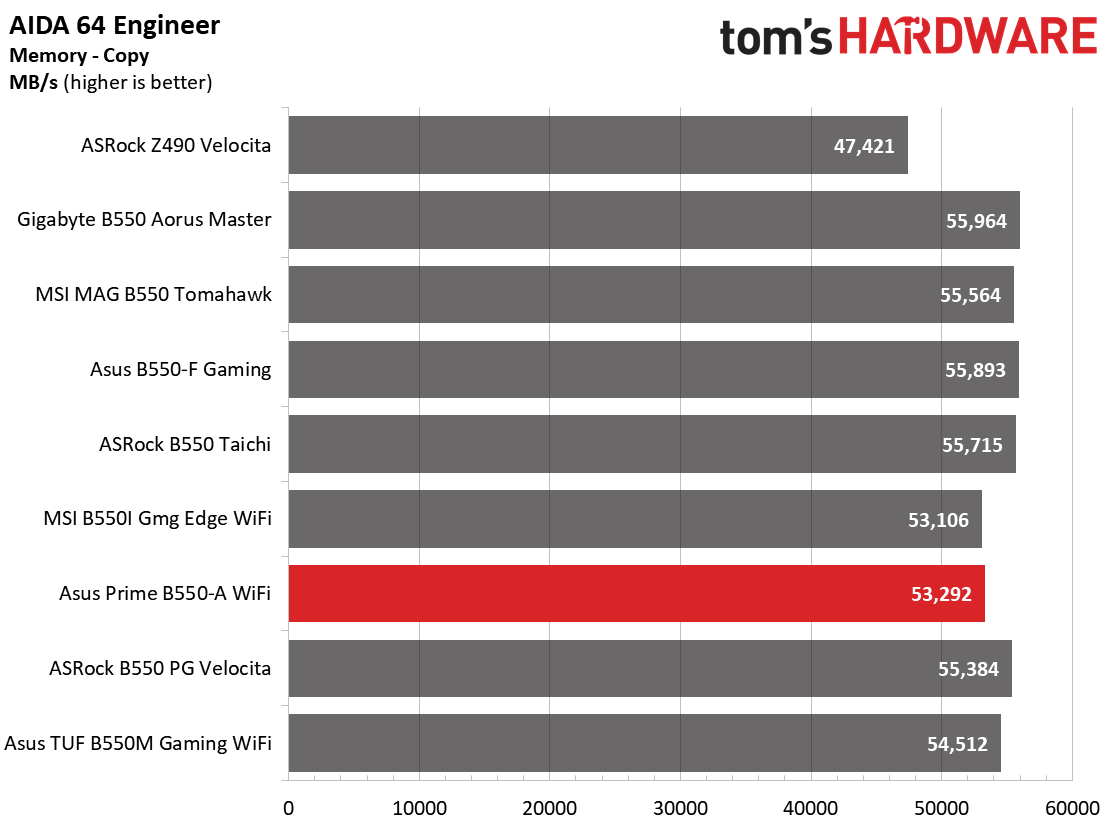
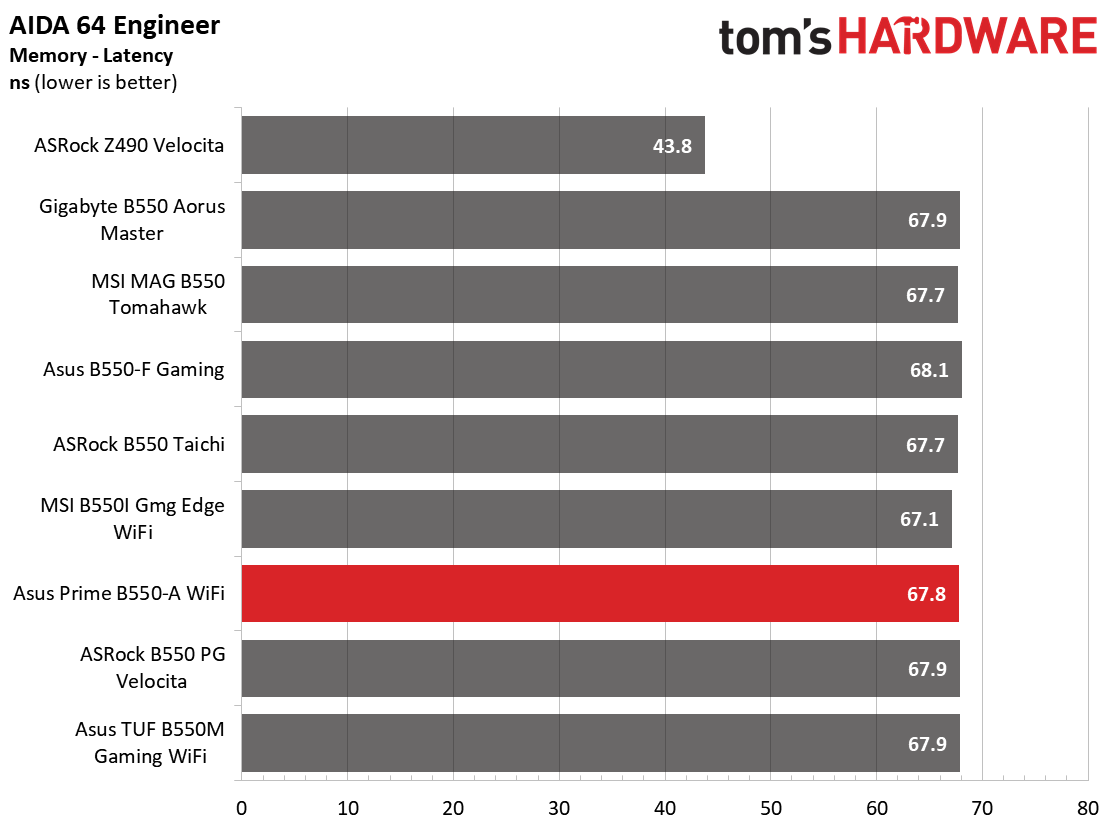
In our synthetic benchmarks, the B550I Gaming Edge Wi-Fi’s results were right in line with the other B550 motherboards. We haven’t seen a lot of deviation in most of these tests, except perhaps with the PCMark suite that can be a bit temperamental at times. In this case, the Asus was lower than all results in application start-up and video editing, though we are unable to pinpoint the precise reason.
Timed Applications
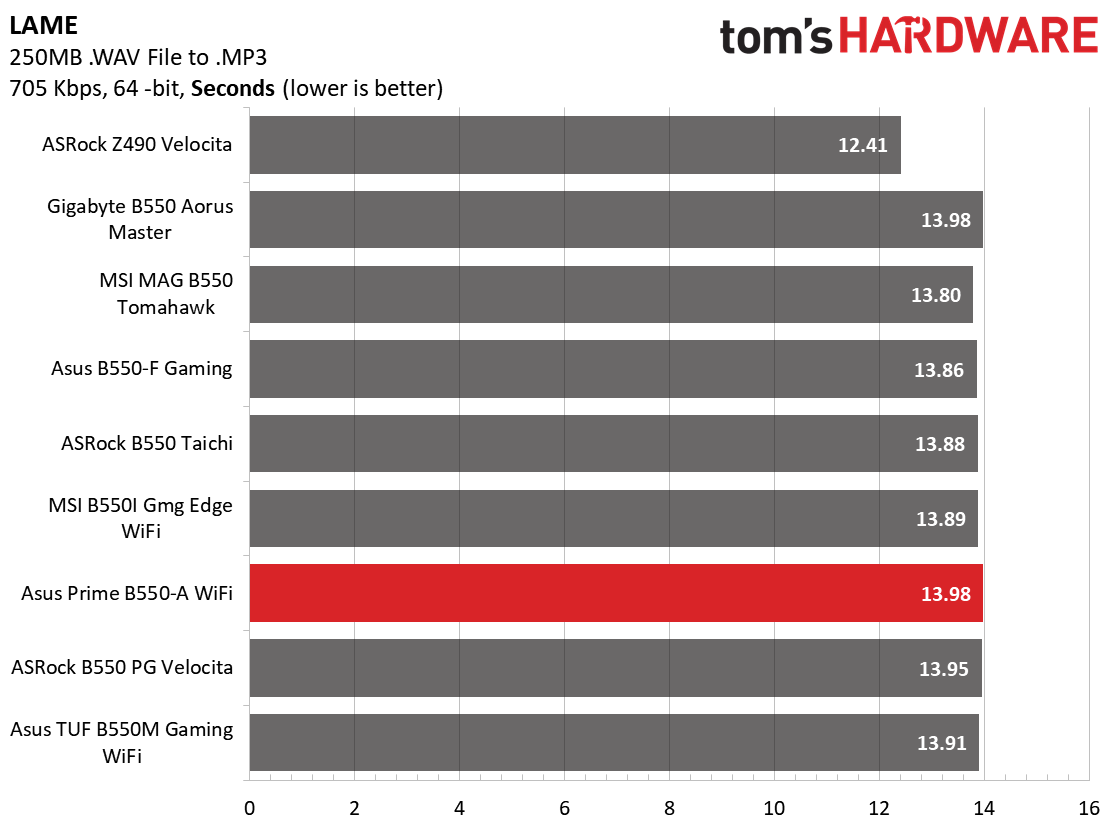
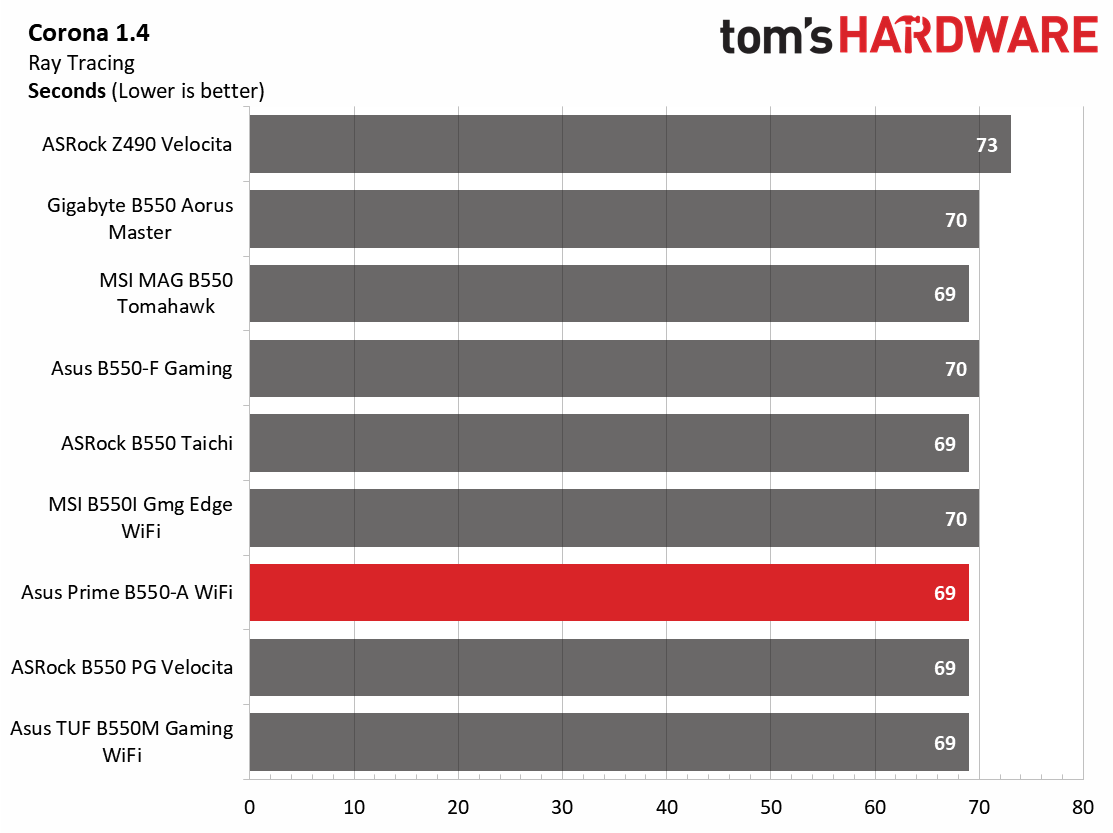

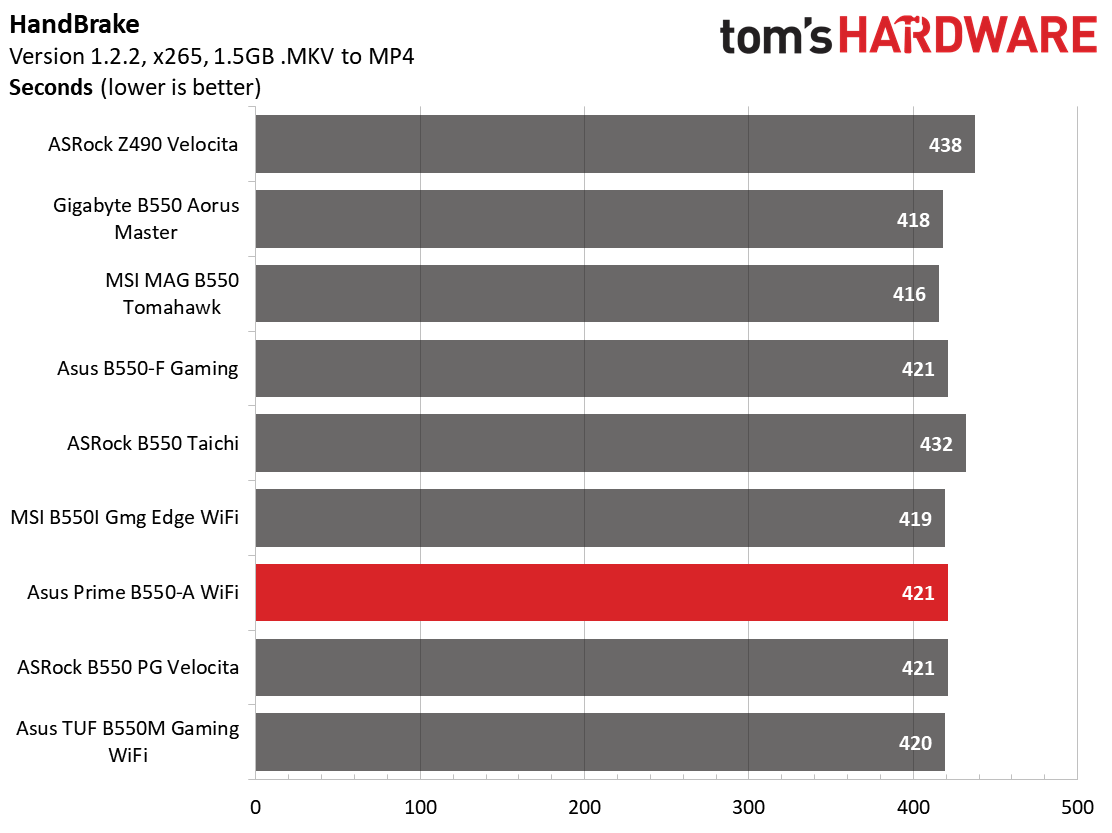
In our timed application tests, LAME and Handbrake, the Prime B550M-A Wi-Fi’s times were spot on when compared to all other B550 motherboards.
3D Games and 3DMark

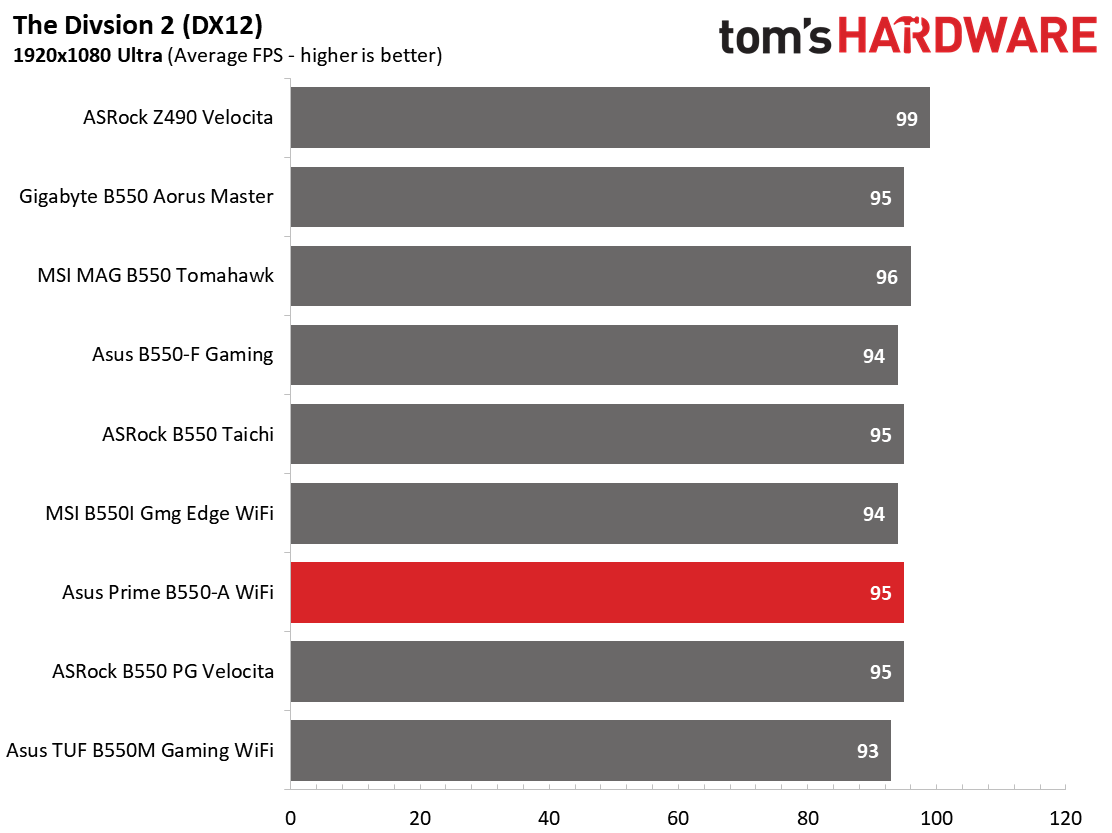
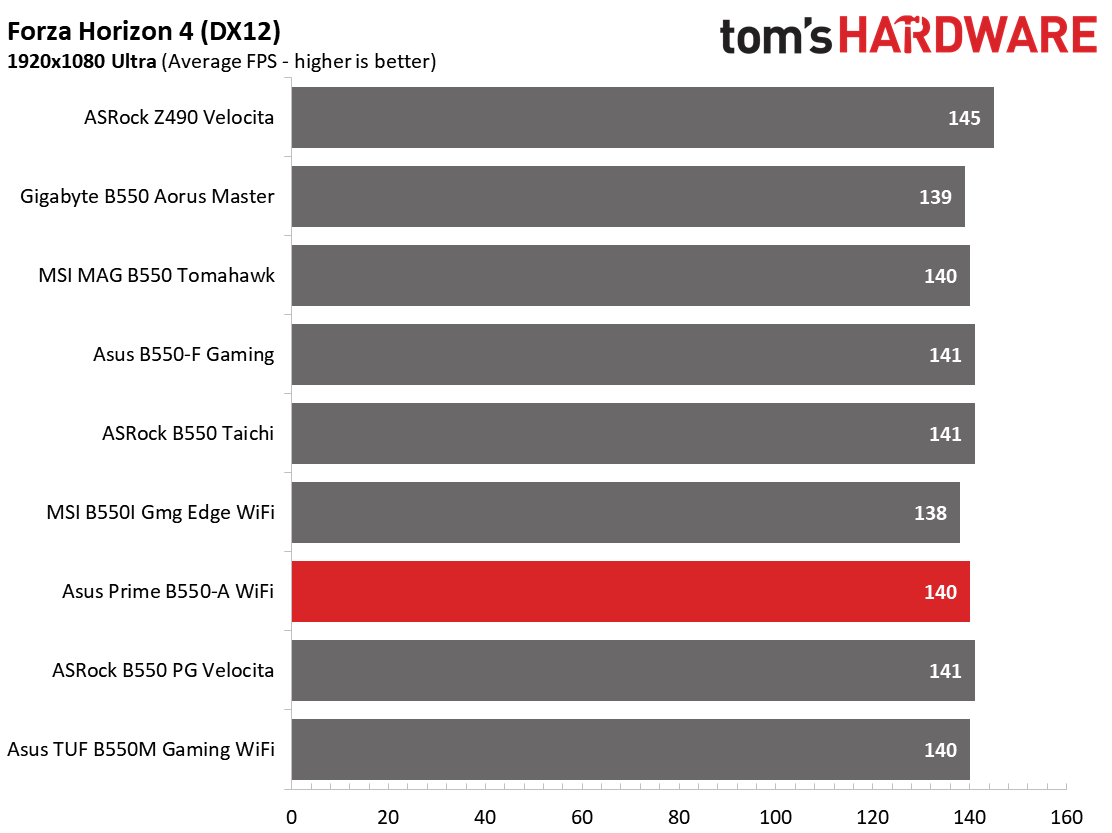
We’ve recently updated our game tests to The Division 2 and Forza Horizon 4. The games are run at 1920x1080 resolution using the Ultra preset. As the resolution increases, the CPU tends to have less of an impact. The goal with these settings is to determine if there are differences in performance at the most commonly used resolution with settings most people use or at least strive for.
During our gaming and 3DMark tests, we saw no significant differences here. Both 3DMark Fire Strike, Time Spy, and our two games continue to show very little difference, as all boards are within a margin-of-error range.
Power Consumption / VRM Temperatures
For power testing, we use AIDA64’s System Stability Test with Stress CPU, FPU and Cache enabled, using the peak power consumption value. The wattage reading comes from the wall via a Kill-A-Watt meter to capture the entire ecosystem. The only variable that changes is the motherboard; all other parts are the same.
Get Tom's Hardware's best news and in-depth reviews, straight to your inbox.
With our test system at idle (using the AMD Balanced power plan in Windows), the Prime B550M-A pulled 51W from the wall, a middling result. During stress-test loading, power use peaked at 213W, also a middle-of-the-road result. There is nothing out of whack when it comes to power consumption here.
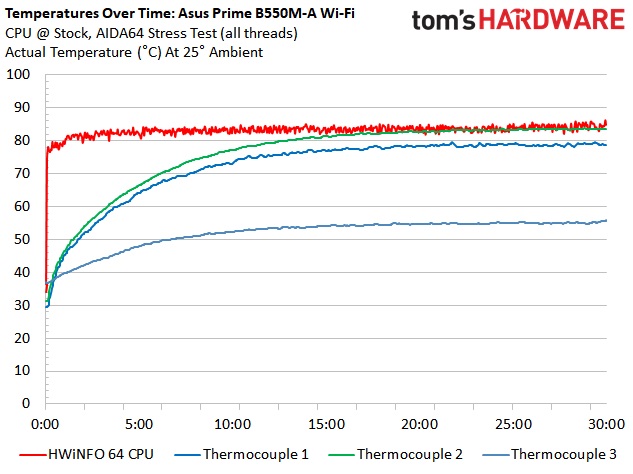
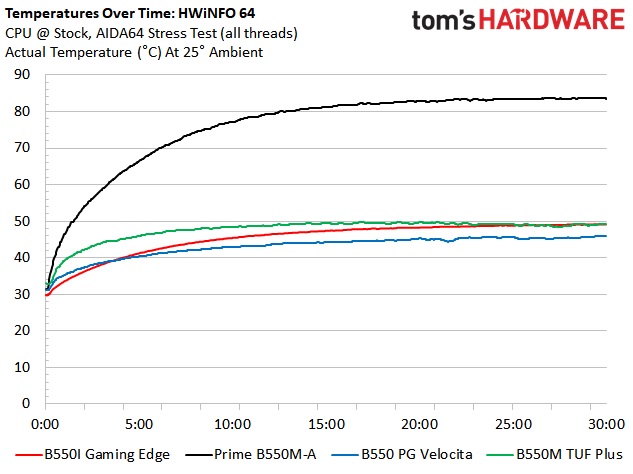
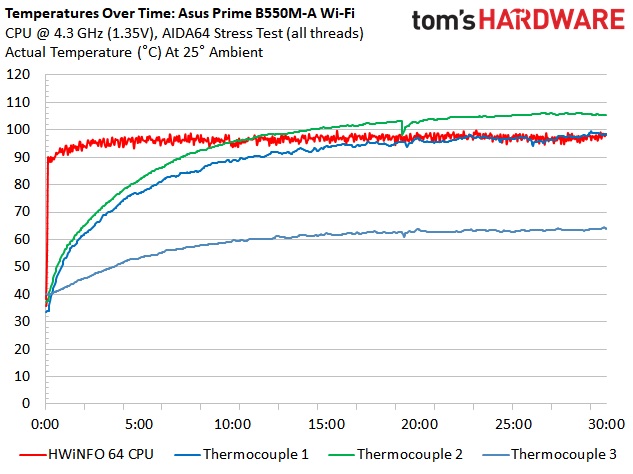

VRM temperatures on this Asus board during stock and overclocked were the highest values we’ve seen so far. At stock CPU speeds, the MOSFETs peaked and sustained about 84 degrees Celsius, a value that is a whopping over 30C higher than the other boards on this platform with more robust power delivery and heatsinks. When we overclocked the CPU to 4.3 GHz at 1.35V, temperatures, temps went up even more, peaking well over 100 degrees Celsius! While these values are incredibly hot, they are within operating parameters of the MOSFETs, which are rated at up to 150 degrees Celsius.
If you don’t like running the VRMs that hot and dumping so much heat inside the chassis, you’re going to need a CPU with a lower TDP. Doing so alleviates some of the stress on the MOSFETs. Regardless of the temperatures, we did not witness throttling of any kind.
Overclocking

There are several ways to overclock on AMD platforms, depending on your goals. If your focus is single-threaded performance, it’s best to tweak PBO and let the motherboard and CPU figure it out under the parameters entered. If you are looking for better multi-core/thread performance, you will overclock all cores to the same speed. Part of our goal is to test the capability of the motherboard, so we chose the more power-hungry option, 4.3 GHz and 1.35V for an all core/thread overclock.
The Asus Prime B550M-A Wi-Fi overclocked our 12c/24t Ryzen 9 3900X without issue. Although temperatures on the VRM were high, the board trudged through our testing and didn’t throttle. VDroop was a non-issue when left on auto, exhibiting a small bit of sag. Merely changing the voltage and CPU multiplier was a recipe for success for our testing.
Final Thoughts
The Asus B550M-A Wi-Fi proved itself to perform mostly in line with larger and more-expensive B550 boards. Our only concern is with how hot the VRMs run with our processor, even at stock speeds. That said, even though the modules peaked over 100 degrees Celsius, the board kept on keeping on, without any issues. Despite being a Micro ATX form factor, the board includes four SATA ports, two M.2 slots, and enough USB ports for most. I would like to have seen a Type-C port, however. Outside of that, there are enough ports and slots for most users to be happy with.
At this price and form-factor, the Prime B550M-A competes with the likes of ASRock B550 Steel Legend ($154.99), Gigabyte B550M Aorus Pro ($129.99), and the MSI MAG B550M Mortar ($159.99). All of the competing boards do have more capable VRMs and heatsinks, as well as superior audio codecs. Additionally, the ASRock includes six SATA ports versus our Asus, and the other boards include four and 2.5 Gb Ethernet. Outside of those differences, it comes down to looks, USB port count and type, appearance and price.
The Asus Prime B550M-A Wi-Fi proved to be a capable motherboard, offering users a balance between features and pricing. If you don’t need more than four SATA ports, don’t mind a mid-range audio codec and aren’t planning on using a 3950X, you’ll be in good shape. However, with other boards priced similarly with more features, I would like to see this board priced $20 or so less for it to land on many short lists.
MORE: Best Motherboards
MORE: How To Choose A Motherboard
MORE: All Motherboard Content

Joe Shields is a staff writer at Tom’s Hardware. He reviews motherboards and PC components.
-
AlB80 This board has VRM with 4+2 phases and only 3 capacitors in the 12V filter. I think a 95-105W CPU with PBO can rip(ple) them fast.Reply -
HideOut ...and has the cheast sound you can get. Its only a couple bucks more to at least upgrade to 1200 sound (not even the newer 12xx ones). Sounds like a board designed only to run 65W chips, especially if you want to OC One. if you arnt going to OC just get the new 520 boards that are cheaper.Reply -
Willz81 It was mentioned in the article "All ports and M.2 sockets can work simultaneously -- there is no lane sharing with this configuration." Does this mean that you can have a GPU and 2 x M.2 SSD's running simultaneously without any problems? I have a AMD Ryzen 7 Pro 4750G and I can't seem to find any documentation on ASUS website or anything about the allowed PCIe configuration! I understand that if I use the two M.2 SSD slots I can only use SATA_3 and SATA_4 slots. So ultimately what I want to do is use the PCIex16 for GPU and 2 x M.2 SSD slots and SATA_3 and SATA_4 all together at the same time.Reply
